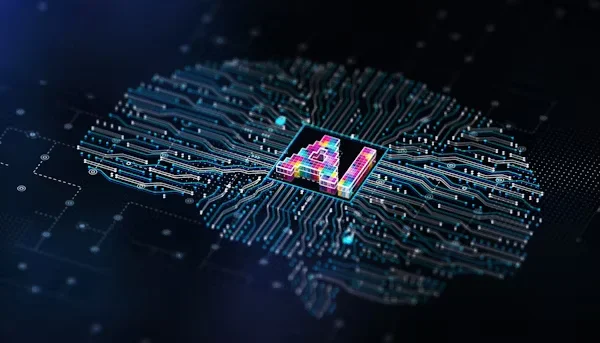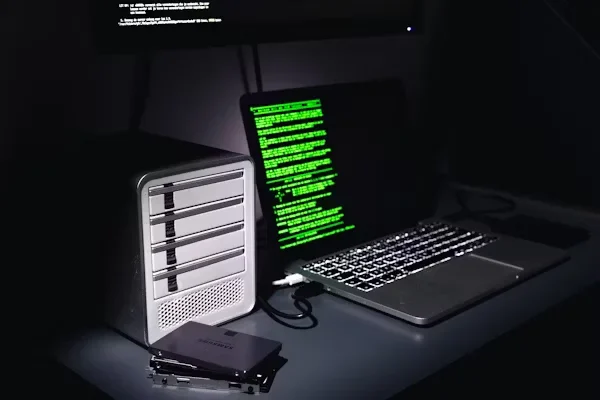Disclaimer: The information provided in this article is for general educational and informational purposes only. It does not constitute professional cybersecurity advice or guarantee protection against security threats. Always consult with a qualified IT security expert or advisor to assess and address your organization’s specific needs.
Many businesses go to great lengths to take all the big and obvious security measures. But it’s often the less visible risks that leave them fundamentally exposed. Some of these threats hide in plain sight, lurking in the shadows of daily operations, waiting to be exploited.
Regular security audits are essential in today’s evolving digital landscape. As cyber threats become increasingly sophisticated each year, even minor blind spots can lead to significant vulnerabilities.
Let’s take a look at some of the security blind spots you may not have thought about.
Identity Sprawl and Unmanaged Credentials

If your team uses a variety of devices and systems, managing credentials becomes a challenge. Employees often use multiple accounts and passwords across various apps, some of which may not be adequately managed. This leads to ‘identity sprawl’, a situation where accounts, both personal and professional, grow out of control.
You may think your security measures are sufficient, but with unmanaged credentials, even a single leak can compromise an entire system.
Implementing a business password manager can help you manage and secure login credentials more efficiently. It stores passwords securely, ensuring that everyone uses unique, strong passwords for each application. This reduces the risk of password reuse, which is one of the most common causes of data breaches.
What many companies don’t realize is that identity sprawl also complicates access control and deprovisioning. When an employee leaves or changes roles, IT teams can overlook dormant accounts, leaving past users with lingering access to databases and work projects. Over time, these forgotten accounts can pile up, creating potential backdoors that digital attackers can exploit.
Quick Checklist for Managing Identity Sprawl:
- Conduct regular audits of active and dormant user accounts
- Implement single sign-on (SSO) where applicable
- Use multifactor authentication for all critical systems
- Establish a straightforward offboarding process to revoke access immediately
“87% of breaches involve compromised credentials.”
Shadow IT and Non-Traditional Assets

Shadow IT refers to the use of devices, applications, or services that a company has not authorized. Staff may use third-party apps, cloud service,s or even personal devices to get some aspects of work done. But these tools often bypass your established security protocols, creating severe vulnerabilities.
To address this, it’s vital to encourage all employees to inform your IT department about the tools they’re using. Implementing monitoring systems that can detect and flag unauthorized apps helps to assure that all systems adhere to the same security standards.
What makes shadow IT particularly dangerous is its invisibility to traditional security monitoring tools. Many organizations are unaware of the numerous tools being used. While convenient, many collaboration and messaging tools lack enterprise-grade encryption or access controls. Secure, approved alternatives should be provided so employees don’t feel the need to find their solutions.
AI-Powered Phishing and Social Engineering

Phishing attacks are nothing new, but advancements in artificial intelligence have made these attacks increasingly sophisticated. Hackers now use AI to craft personalized emails that are harder to distinguish from legitimate communications, making it easier for employees to fall victim to scams and give away sensitive information.
Regularly training your team to recognize phishing attempts can help, but you should also deploy tools that can identify suspicious emails and websites. Using email filtering software with AI capabilities can stop many attacks before they even reach your employees’ inboxes.
Even with the best training, technology is a vital ally in reducing risk, as phishing is no longer limited to poorly worded emails with obvious red flags.
Supply-Chain Vulnerabilities in Software and Hardware

It’s easy to overlook the security posture of your suppliers and partners. A breach in a vendor’s system can have serious consequences for your organization, especially if your operations rely on that vendor for critical services or products.
Make it a habit to review the security practices of any third parties with whom you engage. Regular audits and the use of secure communication channels can minimize risks. Building strong, safe relationships with your suppliers should also protect you from external threats.
Cloud Visibility and Incident Readiness
Many businesses rely heavily on cloud infrastructure for storage and operations, but without proper visibility, you may not even realize when something goes wrong. While cloud services are powerful, they often lack the transparency necessary to identify unauthorized access or suspicious activity quickly.
To bolster security, implement tools that provide detailed monitoring and alerts. These tools help you track user activity and detect unusual behavior, allowing you to act quickly before a potential breach escalates.
Checklist for Improving Cloud Visibility:
- Use centralized dashboards for all cloud services
- Enable logging and continuous monitoring tools
- Set up real-time alerts for abnormal access patterns
- Review access permissions regularly
Try This Short Quiz: Which blind spot is your biggest risk?
- Do you regularly audit inactive user accounts?
- Can your IT team see all the cloud tools currently in use?
- Is phishing training updated at least quarterly?
- Have you evaluated the security practices of third-party vendors?
- Are unauthorized personal apps on the company network monitored?
Conclusion: Don’t Let Blind Spots Become Breach Points
Cybersecurity is more than just firewalls and antivirus software; it’s about full-spectrum awareness. By identifying and addressing these often-overlooked blind spots, your organization can close critical gaps and reduce vulnerability.
Before making your final security decisions, conduct a comprehensive audit that involves all relevant departments. Walk through your tech environment as if you were a hacker. You’re not just securing devices, you’re protecting people, data, and trust.
Take the time to uncover hidden risks and invest in tools and training that can strengthen your defense from the inside out. A proactive approach today could save you from a costly breach tomorrow.












